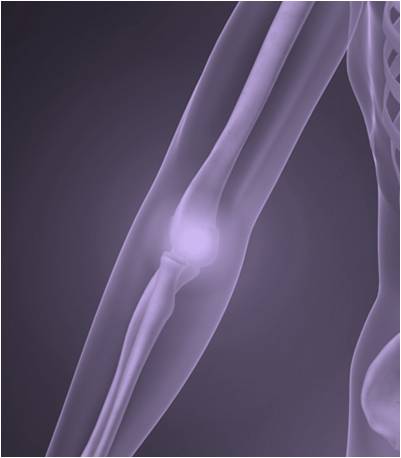Sports and Over Use Injuries
Over-use injuries can cause pain and other problems in the elbow, forearm, wrist and hand. These injuries typically affect athletes and people who perform repetitive motions. Children and adolescents, whose bones have not yet matured, and factory workers are particularly susceptible to over-use injuries.
Repetitive motion, such as over-head throwing, pushing or pulling, twisting or bending the arm, can place severe stress on the bones, tendons, ligaments and muscles of the arm and elbow. Over time this stress can cause damage, pain and eventually scarring of the tendon. Because tendons have a poor blood supply healing can be difficult. Some over-use injuries are so commonly caused by specific activities that they are referred to by that name. Some examples are: tennis elbow, golfer's elbow, student's elbow and Little League elbow. Over-use injuries can cause a variety of symptoms, including pain, swelling, tenderness, weakness, tingling, numbness, loss of mobility and popping or clicking sounds in the joint. Different types of injuries have very specific and recognisable patterns of symptoms. Treatment options will depend on the injury, but may include rest, cold compress, anti-inflammatory medications, and immobilisation in a cast, splint or brace, physiotherapy and only in severe cases, surgery.
SPORTS & THROWING INJURIES OF THE ELBOW
Repetitive throwing places severe stress on the elbow joint. The throwing motion stretches the tendons and ligaments on the inner side of the elbow and compresses the structures on the outer side. These forces can damage tissue and bone, especially in young athletes, whose bones have not fully matured.
MEDIAL EPICONDYLITIS
This condition (commonly called golfer's elbow) results from over-use of the muscles and tendons of the forearm. This can gradually deteriorate the common flexor tendon which attaches to the medial epicondyle, which is the bony bump on the inner side of the elbow. It can usually be treated without surgery.
MEDIAL ULNA COLLATERAL LIGAMENT (MUCL) INJURY
Repetitive throwing can sprain or tear the MUCL ligament, typically the interior band located on the inner side of the elbow between the ulna and the humerus. An MUCL injury causes pain on the inner side of the elbow. A complete tear may require a type of reconstructive surgery.
MEDIAL EPOPHYSITIS
This condition (commonly called Little League elbow) usually occurs in children before they reach puberty. Childrens' bones have growth plates on the ends, which are areas that allow the bones to expand. Repetitive throwing can damage the ligaments or fracture the growth plates, causing pain and swelling on the inner side of the elbow. In severe cases surgery may be required.
OSTEO CHONDRITIS DISSICANS
Repetitive throwing can disrupt the blood supply to the cartilage that cushions the ends of the bones. This can cause sections of cartilage and bone to pull away or break loose completely. This condition commonly causes pain on the outer side of the elbow and may cause the joint to click or lock. Surgery may be required to remove any loose fragments.




